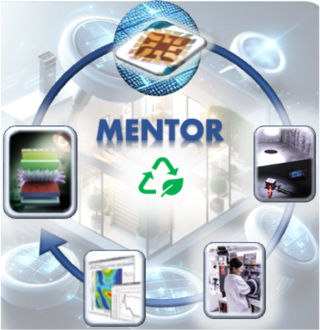Europe strives to be the first climate-neutral continent by 2050 with net-zero greenhouse gas (GHG) emissions. One of the critical avenues toward this goal is the optimization of buildings, which currently account for a substantial 40% of global energy consumption and contribute 36% of GHG emissions. Enhancing the operational efficiency of buildings is paramount, as it holds the key to reducing energy waste, lowering operational costs, and ultimately decreasing global emissions.
Smart buildings represent a cutting-edge solution in this endeavour, harnessing digitalization and automation to coordinate, monitor, and regulate energy consumption in areas such as heating, lighting, and cooling. These systems rely on real-time data collected from an extensive and interconnected network of Internet-of-Things (IoT) sensors. However, a significant challenge lies in powering these IoT ecosystems. Currently, external power sources and batteries are required to fuel the IoT ecosystems, thus turning them into hard to maintain and environmentally hostile infrastructures. This results in high expenses, a significant carbon footprint, and limited IoT scalability. Therefore, creating cost-effective, sustainable, and energy-efficient solutions to fuel the rapidly growing volume of IoT sensors is of utmost importance.
The energy from the readily available light resource in buildings can potentially power the IoT nodes installed therein. This would create energy recycling potential to make IoT energy-autonomous thanks to the conversion of the artificial indoor lighting into electricity via indoor photovoltaics (IPVs). Low-cost, sustainable, yet efficient IPV technologies must be, however, developed to enable large-scale and low-energy footprint IoT deployments, and to sustain the enormous potential of IoT anytime and anywhere. To realize this opportunity sustainably, it is paramount to develop and employ low environmental-impact processing technologies for IPV devices that are compatible with industrial requirements and to adhere to the necessary standardized specifications becomes imperative. This is an area that will expand in parallel with the expansion of the IoT, which means new skills and expertise will be required by future technical leaders and relevant workforce.
Through the successful implementation of 17 doctoral candidate (DC) individual projects, MENTOR institutes an interdisciplinary, intersectoral, and international programme of doctoral training and research that drives the development of new leaders capable of steering academic and industrial R&D on renewable energy, electronics, and sustainability.
MENTOR’s research programme will provide a comprehensive and versatile technology platform to develop next-generation IPVs that efficiently re-use the energy from artificial illumination to power electronics, ultimately contributing to an energy- and climate-neutral world.
The overarching aim of MENTOR is to boost and consolidate the potential of IPVs while accounting for the
growing concerns about sustainability. To achieve this, MENTOR targets 3 specific research objectives (ROs)
as follows:
RO1. Development of sustainable, recyclable and environmentally friendly IPV material technologies
RO2. Optimization of IPV device features based on indoor conditions in regard to scalability, stability and
performance
RO3. Establish models and standard protocols to evaluate and test the performance, stability and the reliability for IPVs
The light levels in indoor environments can vary greatly, ranging from 20 lux to 2000 lux depending on the function of a specific space. Under the most typical indoor lighting conditions, the commercial standard hydrogenated amorphous silicon (a-Si:H) IPVs have inherent indoor power conversion efficiency (PCE(i)) limitations. Recently, new IPV technologies that can effectively harvest low-intensity artificial light have just entered the market or emerged at the R&D lab stage. These next-generation IPVs also promise to lower the thermal budget needed for processing, to yield larger design freedom (e.g., flexibility and facile tunability of colour and transparency), and to reduce the production costs by utilising roll-to-roll printing methods. For all these appealing reasons, MENTOR will focus on indoor light harvesting with emerging organic, inorganic, and hybrid organic-inorganic photovoltaic (PV) technologies that are the most competitive in terms of both environmental acceptance and performance, namely organic PV(OPV), lead-free perovskite (PSK) PV, dye-sensitized PV (DSPV), inorganic PV.
By advancing novel material designs, processing methods, device architectures, theoretical models, and characterization standards across disciplines and sectors, we will amplify the recently credited importance of IPVs for the sustainable powering of the IoT, with tangible impact for industry and society at large.


